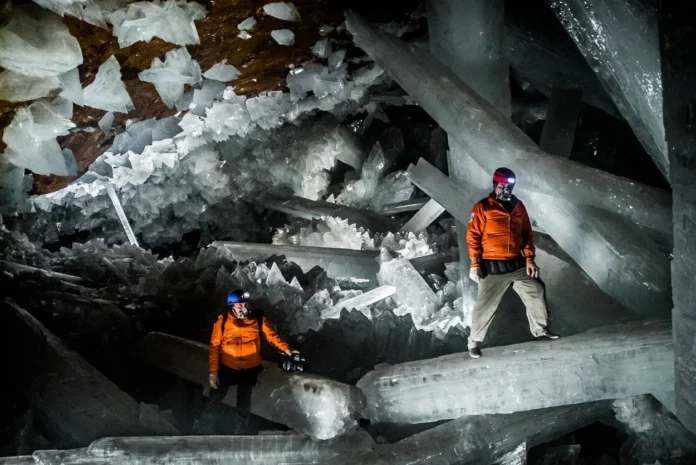Deep beneath the surface of Naica, Chihuahua, Mexico, nestled within the limestone bowels of the Earth and veiled in shadows, lies a marvel of nature barely touched by human presence—the Giant Crystal Cave.

Discovered in 2000 during an unassuming mining operation by Industrias Peñoles, the cave has since unfurled its splendor to a select few, revealing a subterranean world of surreal beauty and extreme conditions.
Our story begins over a century ago, in 1910, when miners first uncovered the Cave of Swords, a precursor to a grander discovery. This cavern, adorned with magnificent swords of crystal merely one meter in length, hinted at the hidden geological wonders, resting just deeper below. It was a prelude to an even more stunning spectacle that lay dormant, waiting for the right moment to unveil itself.
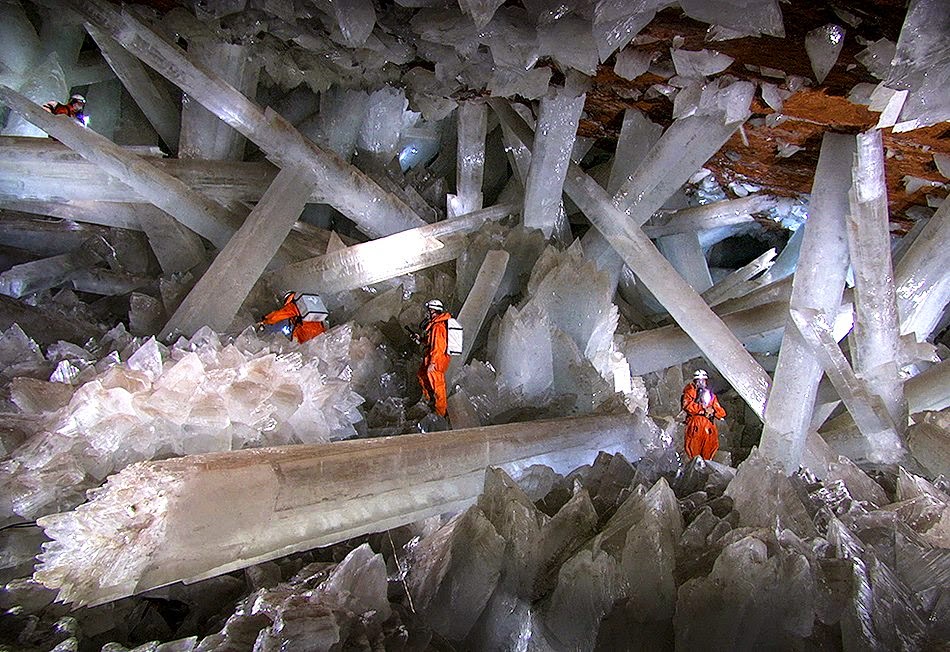
Fast forward to the year 2000, where the hum of machines and the clink of mining tools against rock reverberated through the chambers of the Naica Mine. At a staggering depth of 300 meters below the surface, the miners, while drilling through the Naica fault—a task undertaken with caution for fear of flooding—stumbled upon the Giant Crystal Cave.
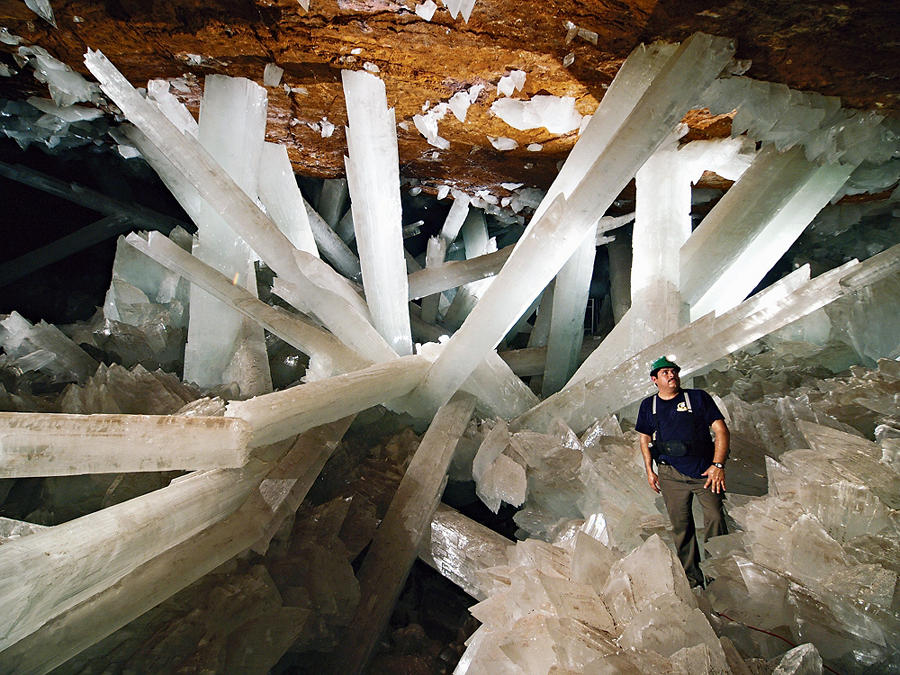
This discovery was not just another cavity; it was a horseshoe-shaped chamber filled with the largest selenite crystals ever encountered by humankind. These weren’t ordinary formations; the mega crystals stretched up to 11 meters long and a meter thick, with some sprouting from the ground, others jutting out from the limestone walls, and yet others intersecting the space from side to side.
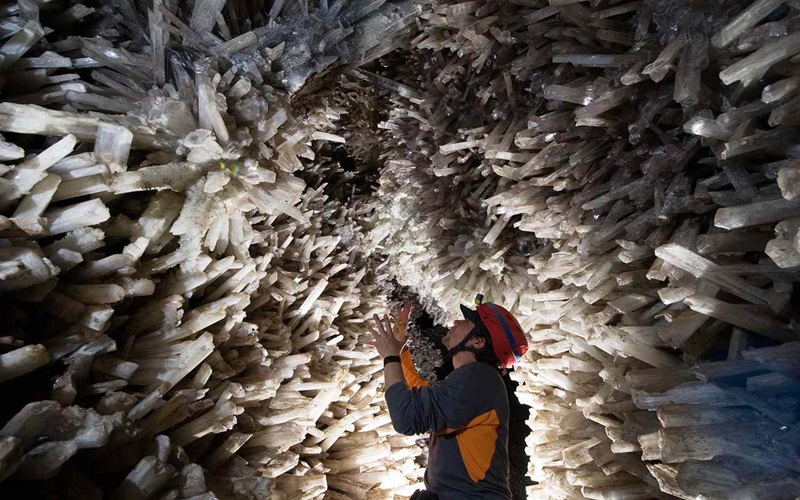
The cave’s ethereal beauty is matched only by its inhospitable environment. Temperatures soar to 50°C accompanied by a relentless humidity at 100%, creating conditions so harsh that prolonged human exposure is unthinkable. Surviving more than a few minutes without specialized gear is a feat, yet this does not deter the brave souls—scientists, explorers, and filmmakers—who venture into this furnace to capture its grandeur, hoping to preserve its legacy before the crystals deteriorate in the open air.
The formation of these natural giants began millennia ago, beneath an ancient fault line above a magma chamber. Here, a slow and delicate dance between heated groundwater, rich in sulfide ions, and cool, oxygenated surface water occurred. This intricate interaction, where oxygen slowly diffused into the heated waters, transforming sulfides into sulfates, led to the crystallization of gypsum at an imperceptibly slow rate over at least half a million years. It was this prolonged gestation period that birthed the colossal crystals seen today.
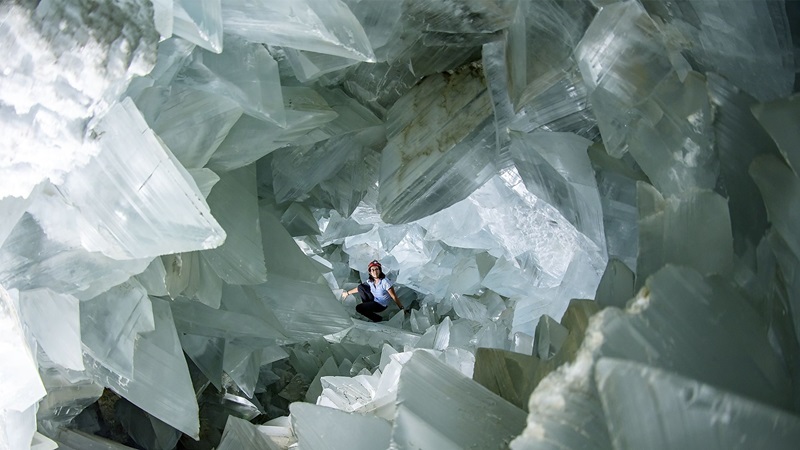
In addition to the Giant Crystal Cave, the Naica Mine shelters other smaller caverns like the Queen’s Eye and Candles Cave, each with its own unique crystal formations, and the newly discovered Ice Palace, found in 2009, showcasing fine, threadlike crystals and quaint ‘cauliflower’ formations.
The narrative of Naica’s crystal caves is one of beauty, extremity, and geological wonder. Each chamber offers a unique glimpse into the planet’s underground artistry, revealing what lies beneath our feet—hidden, majestic, and fleeting. As the Naica Project endeavors to document these crystalline formations, the story of the Giant Crystal Cave serves as a stark reminder of the transient nature of even the most seemingly eternal structures. It’s a tale of discovery, peril, and awe—a profound testament to the mysteries and capabilities of our Earth.



